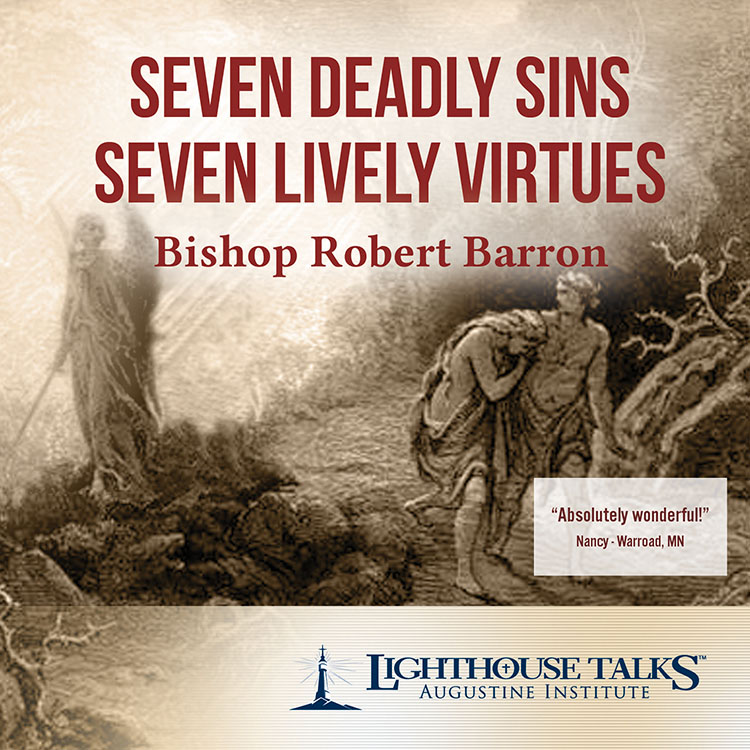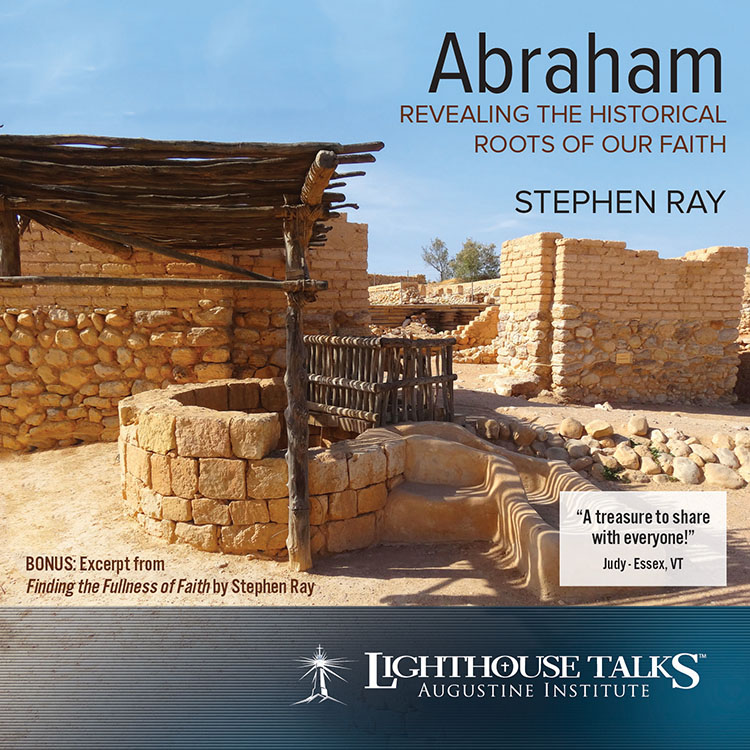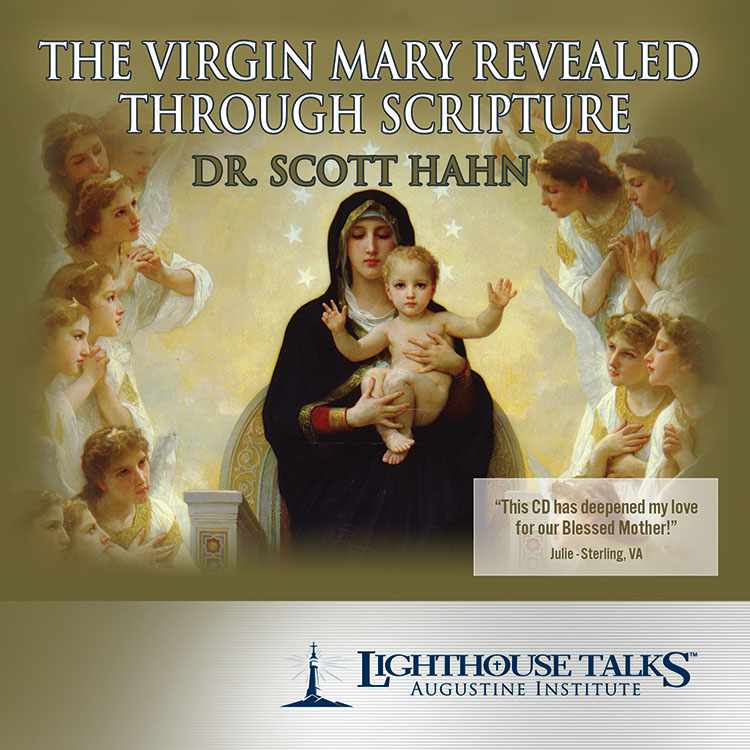Sister Maria Stella
Sister Maria Stella, C.J.D., a missionary to Russia, speaks about the history of Catholic priests, sisters and the laity in Russia from 1917 to the present. Sister Maria begins with the persecution and almost total destruction of the Catholic Church under communism when millions were killed or imprisoned in Soviet labor camps, and ends with post-communist era efforts to revive the Catholic Church in the Russian Far East.
....
Other Recommended Titles:
Contraception: Cracking the Myths
Contraception: Cracking the Myths

In this new revised edition of Professor Janet Smith's groundbreaking expose on the effects of the pill on modern society, she presents a God-centered view of sexuality that can bring married couples a joy that they could have never imagined. Backed by statistics and armed with decades of research, Prof. Smith shows the crippling effect of the contraceptive culture on our relationship with God, our romantic relationships and marriages, the culture at large and our physical and mental health.
Check out the accompanying PowerPoint presentation here.
Check out the accompanying PowerPoint presentation here.
The Healing Power of Confession
The Healing Power of Confession

Dr. Scott Hahn presents the historical and biblical origins of the Sacrament of Penance (Reconciliation). He provides an important guide for new Catholics, a source of renewal for "old hands", and a challenge to all of us to deepen our relationship with Christ through regular use of the Sacrament of Penance.
This is an outstanding talk on Confession that cuts to the heart of this great Sacrament of Mercy. Father Joseph - Baltic, CT
The Lamb's Supper
The Lamb's Supper

Based on his best-selling book, Dr. Scott Hahn reveals the early Christians? key to understanding the Mass: the Book of Revelation. With its bizarre imagery, mystic visions of Heaven, and end-times prophecies, it mirrors the sacrifice and celebration of the Holy Eucharist. See the Mass with new eyes, pray the Liturgy with a renewed heart, and enter into the Mass more fully and enthusiastically!
Excellent! It is hard to express the spiritual impact this CD has had on me. I don't believe I will ever celebrate the Eucharist the same way again! Floy - Manchester, KY
Discovering the Biblical Significance of Mary
Discovering the Biblical Significance of Mary

In one of the most inspiring CDs we have ever offered on the Virgin Mary, Dr. Scott Hahn reveals incredible insights on the Biblical basis for the Catholic teachings regarding Mary as the Ark of the New Covenant. This presentation will help shatter many misconceptions and clearly demonstrate how Catholic teachings are unmistakably rooted in Sacred Scripture. Following the presentation is a bonus segment from a prior talk by Dr. Hahn, "Why Do We Have a Pope?"
Wow! This is by far one of the most inspiring CDs I have heard so far! I can't say enough about it! William - Spring Hill, FL
How to Get the Most Out of Mass
How to Get the Most Out of Mass

Dr. Scott Hahn takes us through the awesome grandeur of the Holy Sacrifice of the Mass, from the entrance song to the dismissal. With great clarity, he takes us through a basic outline of the structure of the Mass, explaining how the Sacred Liturgy transforms the ordinary into the extraordinary and the earthly into the heavenly. A must-have for every Catholic and non-Catholic who wants to know what the Mass is all about.
Your whys and wherefores will be answered! Carrie - Columbus, OH
Seven Deadly Sins - Seven Lively Virtues
Seven Deadly Sins - Seven Lively Virtues

Join noted Professor of Theology and author, Fr. Robert Barron, in this revealing presentation as he sheds light on the Seven Deadly Sins - those great spiritual blocks that inhibit our relationship with God and others - and the antidote to them, the Seven Lively Virtues! Fr. Barron uses Dante's DIVINE COMEDY to expose these sinful patterns in our lives and show how they are effectively counteracted by the cultivation of virtue through the development of the gifts of the Holy Spirit. This fascinating journey shows the path that God has designed to lead us to health, happiness and holiness.
Absolutely wonderful! I love how Fr. Barron gives practical ways to use the information he’s presenting. Nancy - Warroad, MN
Jesus and the Jewish Roots of the Eucharist
Jesus and the Jewish Roots of the Eucharist

Dr. Brant Pitre uses the Hebrew Scriptures and Jewish tradition to frame the actions of Jesus at the Last Supper, and to provide a fresh look at the heart of Catholic practice — the Eucharist. By taking us back to the Jewish roots of our faith, Dr. Pitre gives us a powerful lens through which to see anew the bread of the presence, the manna, the Last Supper, and ultimately the meaning of the Eucharist.
Click Here For Free Study Guide
Click Here For Free Study Guide
Amazing teaching on the Eucharist!! Such fullness; so rich in history... The more I learn, the more I love our Faith! Lydia - Windham, NH
Abraham Revealing the Historical Roots of our Faith
Abraham Revealing the Historical Roots of our Faith

Stephen Ray emphasizes that unless we understand the innate “Jewishness” of Christianity and our Old Testament heritage, we will never fully understand our Faith, the Church, or even salvation itself. These are rooted not only in the early Church but 2000 years before that, in Abraham. With his infectious enthusiasm, Stephen helps us to learn the deep truths of scripture that God taught through Abraham.
Incredible presentation! Steve Ray has really helped me get interested in the Old Testament and excited about studying Sacred Scripture! - Evan, OK
The Virgin Mary Revealed Through Scripture
The Virgin Mary Revealed Through Scripture

Once a Protestant minister, Dr. Scott Hahn was a militant opponent of the Catholic Church. Now one of the foremost Catholic theologians in the world, he responds to key misunderstandings about the Virgin Mary. This captivating presentation explains the biblical and historical basis for the Church's teachings that the Virgin Mary is the New Eve and the Queen of Heaven.
I learn more every time I listen to this CD! I really liked the explanations of the Old Testament being fulfilled in the New Testament. Debra - Germantown, WI
Becoming The-Best-Version-of-Yourself
Becoming The-Best-Version-of-Yourself

Matthew Kelly possesses a powerful ability to combine the ageless tool of storytelling with a profound understanding of today's culture and the common yearnings of the human heart. He shows us how to see the challenges in our everyday lives in a new light. He will help elevate and energize you to pursue the highest values of the human spirit and become the best version of yourself.
OUTSTANDING!!! This timely presentation was filled with truth & presented in a way that was easy to identify with and understand. Anne - Youngstown, OH





